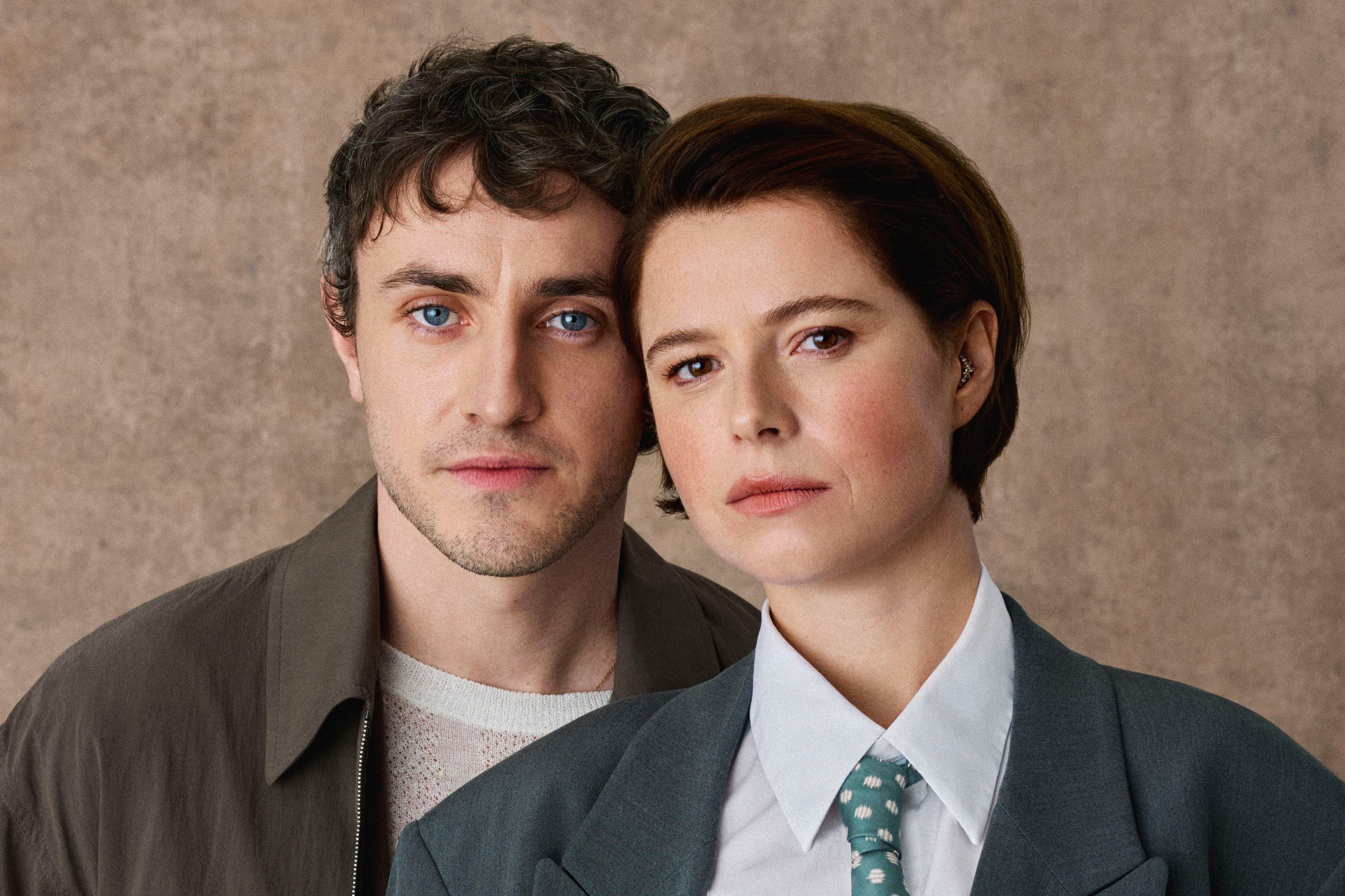Think of the trees in your life. A tree you used to climb as a child. A tree your own child climbs now. A tree you’re drawn to on your Sunday walk. A tree you huddled under on a first date in the rain. A tree that reminds you of someone. We all have a favourite tree, even if we’ve never thought about it in those terms. And we all know how we feel better just being in the presence of trees.
Despite a very well-curated image, Ireland has one of the lowest percentages of tree coverage in Europe. Across the continent, most countries average 35 per cent forest cover, but here the figure sits at just 11 per cent. Of those meagre forested areas, just over 1 per cent is native woodland, down from over 80 per cent after the last ice age. These are frightening figures, but perhaps it is a mistake to think of trees merely as statistics.
In the words of Nobel Prize-winning author and poet Hermann Hesse, “Trees are sanctuaries. Whoever knows how to speak to them, whoever knows how to listen to them, can learn the truth. They do not preach learning and precepts, they preach, undeterred by particulars, the ancient law of life.”
Here, five nature lovers talk about their favourite trees, and describe the influence they have had on their lives.
READ MORE
‘I always felt it was there for me. It was like going to see a good therapist’
Zoe Devlin is a wildflower expert, photographer, and author of Wildflowers of Ireland: A Field Guide

One of my favourite trees is only a couple of years old. I was looking for something to plant because we lost our son during Covid. I love native Irish trees, and I love the hawthorn particularly, because it is such a giving tree. When it flowers in May the bees all come and it feeds them, it gives shade during the summer, and then berries for the birds. So we thought we would like to put a hawthorn tree, not one from a nursery, but a plain ordinary species, Crataegus monogyna.
My daughter has a hedge in Kildare and she plucked one out and gave it to us. At first we thought it wouldn’t make it because our soil is so different and so deplete, but it did. It’s in its second year now and the leaves are coming on beautifully. I’m very happy to watch that tree as it grows. It’s a young tree, so I don’t have a long history with it; the one tree I do have history with is a beech tree by the side of the Vartry reservoir.
My husband and I have been walking that reservoir for 40 years. We used to bring the kids with us; we used to leave them to play Pooh-sticks in the little ditch beside the reservoir. You wouldn’t do that now. We would walk as far as that tree and just stroke her and put our arms around her. We reckoned it had to be female. That was its persona, a kind of Mother Nature tree; there were so many other things living in it, it was so biodiverse.
It used to help us too. I always felt it was there for me somehow. I always felt a connection with it. It was like going to see a good therapist. Whatever problems I had, I felt I could talk to it. I went there a few times on my own and I spoke to the tree. I felt better when I came away.
I visited recently to take this photograph, hoping the tree hadn’t been brought down by storm Eowyn as others had, but it was there, with loads of leaves sprouting from it, leaning towards the water as it has always done.
‘The limbs of the tree reach out into space – there’s a real power to the tree’
Eoghan Daltun is a sculptor, farmer, and author of An Irish Atlantic Rainforest: A Personal Journey Into the Magic of Rewilding

It’s not easy for me to choose a favourite tree, since there are so many thousands in the rainforest growing on my 73-acre farm here on the Beara Peninsula in west Cork. But if I absolutely had to, it would be a certain sessile oak, a native species that grows wild in the west and other rougher, more stony parts of Ireland – hence its scientific name, Quercus ‘petraea’.
When I say “wild”, that word is utterly key to what makes this tree so special: it grew from a self-seeded acorn. The tree wasn’t planted. And if you saw the tree, you’d understand how it would actually be impossible to plant a tree like this.
It’s growing at the edge of a rocky escarpment, and its roots penetrate down to a cave below, in which you can see them bursting through the rock from above. The stream running alongside turns into a temporary mini lake in high rainfall, making the spot a sheer wonderland.
When we’ve got so few native trees left in Ireland, to even consider wiping out a large proportion of those ... it just boggles the mind
The tree itself leaves zero doubt that it’s a rainforest tree, being covered in epiphytes.
Epiphytes are plants that grow on trees, and an abundance of them, anywhere in the world, says just one thing: “rainforest”. On this particular tree there are the usual epiphytic mosses and polypody ferns you’d expect in an Irish rainforest, but also a whole bunch of other species. You’ve got flowering plants like celandine, goldenrod, dog violet, wood sorrel, as well as woodrush, all growing on the tree.
Another thing I love about this particular tree is that at the base is an ants’ nest, and they’ve made a kind of a highway running diagonally up its trunk. The passage of millions of tiny legs up and down the tree has worn a deep furrow through the moss to the bare bark.
The limbs of the tree reach out into space, because it’s on the side of this cliff. The whole shape is incredibly unique and charismatic: there’s a real power to the tree.
And again, it all comes back to the fact that it’s wild, therefore unlike any other tree in the whole forest, all of which are distinct individuals.
They’re almost certainly directly descended from the first trees to colonise the area after the last ice age. In an age of globalisation – including the plant trade – an oak bought in a garden centre or nursery in Dublin, Amsterdam or Brussels will probably all be genetically identical, domesticated versions of the species. This oak is at the very opposite end of the spectrum, part of a unique, wild population limited to just this part of Beara.
[ Ireland needs more wild native forests – not lifeless Sitka plantationsOpens in new window ]
One of the other things that makes this tree so special is that it’s growing very close to a main road: only about 10 metres away. When TD Michael Fitzmaurice said early this year that all trees growing within 30 metres of any road, power or communication line should be cut, I remember thinking of this particular tree and feeling deep, deep anger.
I don’t know how old it is, but I’d guess it has stood there for somewhere between 150 and 200 years, never bothering anybody. Quite the contrary: it’s a pillar of the local ecosystem, providing habitat for thousands of different organisms. When we’ve got so few native trees left in Ireland, to even consider wiping out a large proportion of those ... it just boggles the mind.
‘It makes me smile every day when I pass it. It’s a part of my life’
Seán Ronayne is an ornithologist, wildlife sound-recordist, environmental activist and author of Nature Boy: A Journey of Birdsong and Belonging

There are lots of great trees that have really impressed me around the country, but it’s the local trees that are most important to me, because I grew up with them. There is one in particular. A great big gnarly sessile oak tree in my local wood, Ballyannan Wood in Midleton in Cork.
The wood itself is largely modified and planted, but it’s an ancient woodland. There’s a big carpet of bluebells, there’s greater woodrush, there’s lots of wood anemone. This tree stands out among it all because it just looks like a wizened old character of the wood. It doesn’t conform to the straight lines of the conifers that have been planted around it. It’s a natural monument, really. I often look at it and think of the stories it must have heard and the birds and animals it must have seen through time.
These days we cut down trees for nothing. We don’t give it a second thought. But if you go back to the period of the Brehon Laws, we had a whole series of laws surrounding our trees. There were 28 trees categorised into different values. The oak was the tree of the kings and queens. There are various accounts, but I’ve read that cutting down an oak tree could impose a fine of nine milking cows. That would have been devastating to someone back then.
[ ‘My mission is to record all of the bird species in Ireland’Opens in new window ]
Because of these laws and because we respected them, we had a lot more trees than we do now. Veteran trees now in Ireland are rare; trees that are a few hundred years old.
This sessile oak in my wood is probably from the mid-1800s. I just look at it and it takes me to another place. To the old oak woods that are described in texts from the past. They sound like magnificent places. If one tree like that can move a person, imagine what a whole forest of big old veteran oak trees would have done. Wouldn’t it be great if we could bring that back?
There are some lovely oak woodlands, and to walk in places like that now is a real window into the past. There’s one place in Donegal, Ardnamona wood, and it’s stunning. I think it’s the greatest example of a sessile oak wood in the country. But I’m still happy I’ve got this one oak. It’s something. It makes me smile every day when I pass it. It’s a part of my life. When I was a kid I used to climb it. I can vividly remember my father helping me up. And I remember meeting an old friend there, who has passed, and he was a real character of that wood. Iain Hill was his name. A Scottish man, very softly spoken, and he loved nature. The last time I met him was at that oak tree.
Just like in music and taste and smells, we have memories in our trees, too, and our natural spaces. This tree is a significant marker in my life in terms of memories. All happy memories.
‘I’d be devastated if those two trees were gone’
Aoibhinn Ní Shúilleabháin is an associate professor in DCU, biodiversity advocate and chair of the Independent Advisory Committee on Nature Restoration
There are two enormously tall scots pine trees on the Rua Oileans. The Rua Oileans are two little islands on Lough Corrib. They mean a lot to me because as children we would go fishing on the Corrib on my grandad’s boat, which is now my dad’s.
The first thing you see when you go out in the boat and get past the shore reeds are the Rua Oileans, covered in trees. It’s a place where we would stop to have a picnic if we’d been out fishing for a couple of hours. Annoyingly you can’t really walk around because there’s just so much growth. So it’s a real adventure to try and walk around the island. I used to think that trees couldn’t grow like this on the hills in Connemara, but now realise the islands epitomise what our landscape could look like.
Those two trees are my favourites because they mark to me what the Corrib is. They are Connemara. I was out on the boat at the weekend with my kids. We saw the islands ahead of us and I just said, “Oh, my soul feels better.” My brother was in the boat as well and he said, “Me too.”

That’s what those trees epitomise for me; just stopping and connecting. I connect with nature when I’m on the lake, because there’s nothing else you can do except watch the water, look at the flies on the water, listen to the wind, look at the trees. And look at the sky. All you’re doing is being in nature.
That’s my connection. Those two trees, those enormous Scots Pines that look like they shouldn’t be there. I’d be devastated if those two trees were gone.
‘This horse chestnut tree has been a mother tree to me for a long time’
Catherine Cleary is co-founder of Pocket Forests, a social enterprise planting native trees and shrubs in urban areas. She is growing a native forest on a former farm in Co Roscommon
When we think about favourite trees they tend to be the trees that have been around a lot longer than us, and in that category there’s one tree on the farm in Roscommon which is an incredible tree, unfortunately dying from ash dieback. It has been given a life by Kerri ní Dochartaigh, who wrote an incredible poem called The Mother Tree for the documentary that was made about our farm project called The Forest Midwife. It is speaking in the voice of the tree on the farm, this 80- to 100-year-old ash tree, which is struggling to continue with ash dieback.
So that’s one that’s very, very close to my heart. But the one that more people might be able to visit, and one I visit much more regularly, is a big old horse chestnut tree in the Iveagh Gardens in Dublin’s city centre. [It is] at the back of the Iveagh Gardens in a kind of wooded area, which is still under threat from development. I will be putting up a tent in there to stop it from being cut down.
In that glade at the back of the Iveagh Gardens, you feel like you’re just in a tiny fragment of forest. This horse chestnut tree has kind of been a mother tree to me for a long time, in that I have visited it at various tough times. I think it was Thomas Pakenham who once said trees are great listeners. And this horse chestnut is a great listener.
About 18 months ago a huge limb fell off it, because it is beginning to come to the end of its days, and it was given a very severe piece of tree surgery – it basically had all of its huge, enormous canopy cut down, for safety reasons presumably. But this summer it is leafing up again; a tiny, much-dwarfed version of itself, but it’s still there. It’s still keeping on.





















